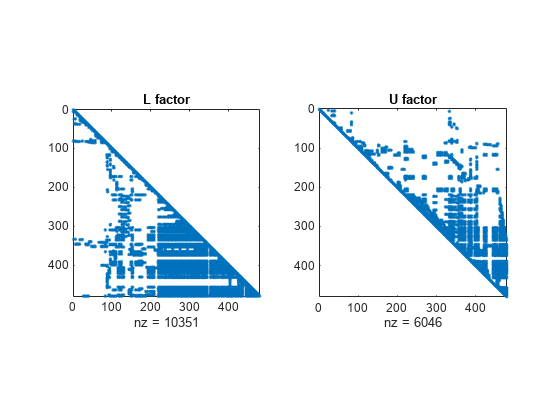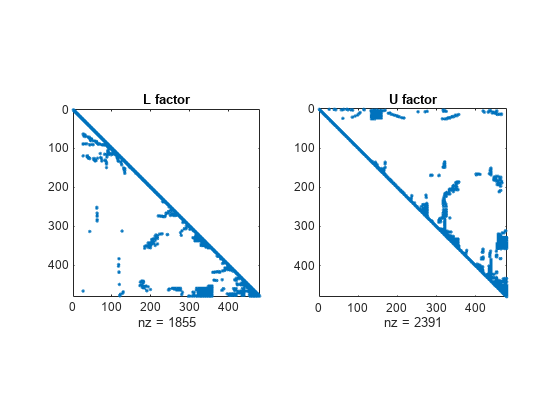lu
LU 矩阵分解
语法
说明
[___] = lu(___, 以 outputForm)outputForm 指定的格式返回 P 和 Q。将 outputForm 指定为 'vector' 以将 P 和 Q 返回为置换向量。您可以使用上述语法中的任何输入参量组合。
示例
输入参数
输出参量
算法
使用高斯消去法的变体计算 LU 分解。计算精确解取决于原始矩阵 cond(A) 的条件数的值。如果矩阵具有较大的条件数(接近奇异矩阵),则计算的分解可能不准确。
LU 分解是使用 inv 得到逆矩阵和使用 det 得到行列式的关键步骤。同时,它还是使用运算符 \ 和 / 求线性方程解或矩阵除法的基础。这意味着 lu 的这些数值限制也会存在于依赖它的这些函数中。
参考
[1] Gilbert, John R., and Tim Peierls. “Sparse Partial Pivoting in Time Proportional to Arithmetic Operations.” SIAM Journal on Scientific and Statistical Computing 9, no. 5 (September 1988): 862–874. https://doi.org/10.1137/0909058.
[2] Anderson, E., ed. LAPACK Users’ Guide. 3rd ed. Software, Environments, Tools. Philadelphia: Society for Industrial and Applied Mathematics, 1999. https://doi.org/10.1137/1.9780898719604.
[3] Davis, Timothy A. "Algorithm 832: UMFPACK V4.3 – an unsymmetric-pattern multifrontal method." ACM Transactions on Mathematical Software 30, no. 2 (June 2004): 196–199. https://doi.org/10.1145/992200.992206.

